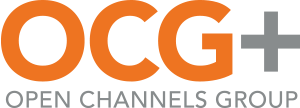As the world returns to the office, it can feel like we’re simply getting back into the normal pace of things. But returning to a “normal” work environment is an opportunity to reimagine your culture and implement changes to your outreach that prove your commitment to intentional inclusion. Diversity, Equity, and Inclusion is about using resources to establish and maintain equity. It is complicated, but it is not impossible if companies are willing to listen and take critique.
Many have already taken the first step by acknowledging the problem of social inequity by dedicating dollars and creating plans to build community relationships both internal and external. However, for companies wanting to do more than just check a box, and instead make genuine, long-lasting, and impactful change for marginalized communities, what’s next? Systemic racism, xenophobia, gender inequality, and so on… anyone would say these issues are far too complex for just one check or program to fix. It requires consistent effort toward dismantling those systems. The difference between performative activism and true activism is impact. Past years’ financial donations and diversity initiatives are empty without the follow-up to ensure that such efforts are effective.
So how can companies measure their progress in their DEI efforts both internally and externally?
Externally a company can…
- Invite accountability by building relationships in the communities you’re seeking to impact. Building relationships with community leaders within minority communities proves a genuine desire to create long-term solutions to problems through collaboration.
- Understand that a partnership can be just as valuable as contributing financially. Money is not the only resource companies have to offer; a relationship can be just as valuable. There is an opportunity to connect with the communities you seek to serve: you can make more informed and specific contributions to their efforts.
Internally a company should…
- Seek accountability from employees, particularly those belonging to marginalized communities. In the last year, many companies have implemented or revitalized a diversity, equity, and inclusion (DEI) program. These programs should be regularly evaluated. Though the intent of your initiatives may be well-meaning, DEI efforts are not evergreen. They should evolve as social standards evolve, constantly looking towards equity.
- Recognize your responsibility to improve your DEI initiatives as more knowledge is gained. When accountability from your team is encouraged, feedback should be heard openly and applied to future projects.
Though accountability may be uncomfortable; understand it is not intended to undermine the genuine efforts of a company. Rather, accountability can be an acknowledgment of the successes your company has managed and encouragement to redirect efforts in areas that enhance the work you’ve already begun. With offices finally resuming business as usual, recognize that the expectations for workplace DEI efforts have changed due to the changes the world has seen during the pandemic. There is no better time than now to prove your commitment to equity by adjusting to the needs of marginalized communities.
